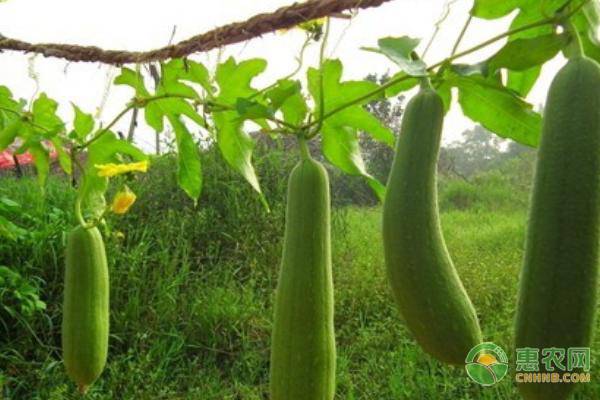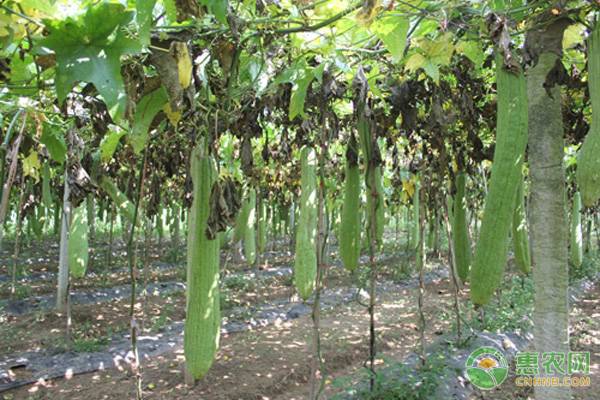At present, there are more and more farmers who choose to plant loofah in the protected area, especially the early spring loofah, which is very popular. So today, Xiaobian will introduce the high-yield planting techniques of the early spring loofah.

1, choose the value of the seedlings
The transplanting of large seedlings, after the slow seedling period, during the slow seedling process, the vegetative growth is inhibited, and the reproductive growth is increased, which can effectively prevent the early growth of the loofah scorpion, promote reproductive growth, and achieve the purpose of early maturity and high yield.
The loofah cultivated in the early spring protected area generally requires 7-8 true leaves, and the plant height is about 35 cm. The vine is the best transplanting period, and the general seedling age is 65-70 days. When planting, the ditch is ditched at a distance of 80 cm. After fertilization, the mixture is smoothed, watered for sputum, dampness is sealed and the ridge is changed. The loofah seedlings are planted on the ridge. The plant spacing is recommended to be 35-40 cm. After planting, the root water is poured and the depth of planting is determined. To be buried in the bandits. After planting, the temperature is raised, 33 degrees during the day and 17 degrees at night, and kept for 2-3 days, prompting the loofah to quickly root and slow the seedling. After the seedlings are slowed down, they can enter normal management, 28-30 degrees during the day and 15 degrees at night.
2. Environmental regulation
The growth temperature of loofah is 20-30 degrees, suitable for early seedlings, 20-25 degrees during the day, 15 degrees at night, and ground temperature 13-19 degrees. Warm up after sitting on the melon, keep 25 to 30 degrees during the day and 15-20 degrees at night.
The loofah period and the flowering result period should prevent the air humidity from being too large, causing the stems to grow and the flowering results to be blocked. When the temperature rises to 28 degrees in the morning, it starts to ventilate and drain, and when the temperature drops to about 20 degrees in the afternoon, the vents are closed. In the rainy weather, the window should also be ventilated. The purpose is to discharge some harmful gases in the greenhouse to prevent the damage of the leaves.
Strengthen lighting management. The greenhouse should be exposed early and covered in the evening to maximize the light transmission time. In addition, it is necessary to wipe the shed film in time, clean the dust on the film, and prevent excessive pollution from affecting the illuminance.
3. Plant adjustment
During the growth and development of loofah, plant adjustment should be carried out in time to reduce the consumption of nutrients and promote the melons. Plant adjustment generally includes measures such as playing old leaves, playing side vines, timely vines and chemical control.
(1) Playing old leaves: It means that the lower leaves will be destroyed early when they enter the aging stage, which can reduce the consumption of nutrients and increase the ventilation.
(2) Side vine finishing: Due to the high density of the shed and the limited space, the number and length of the side vines must be limited during the growth period to achieve the effect of less consumption and no closure. The lateral vines at the base of the stem are generally required to be removed. The side vines formed above 10 leaves can be topped with 1-2 leaves. Generally, the first and second leaves of the side vines have female flowers and can form a melon. If you don't pick the heart, the side vines are not easy to bear fruit.
(3) Management of falling vines: Loofah vines should fall in time when growing to the top film of the shed, depending on the situation. After the vines are laid, the growth points of the vines should be arranged in order to facilitate the lighting.
(4) Chemical control: At present, chemical agents can be used to control the growth rate of stems. Generally used 15% paclobutrazol, spray concentration of 10 mg / kg, or 200 mg / kg of chlormequat, can shorten the loofah stem section, reduce the length of melon vines, increase the diameter of melon vines, save plant adjustment labor, and more Gua.

4, water and fertilizer management
Water and fertilizer management is the key to improving the yield of early spring loofah. Watering and topdressing is timely and reasonable, which can promote the growth rate of fruits and fruits and increase production. Wrong watering and topdressing can lead to plant madness, melon flowering and serious diseases. To this end, the key aspects of water and fertilizer management must be seized.
(1) pouring through the planted water: in early spring, the loofah must be watered to settle the planting water, which is conducive to increasing the ground temperature and speeding up the seedling. If the bottom is not enough at the time of planting, pour small water, and the soil moisture is small after 3-5 days, which is easy to be drought; if it is not watered, it will easily cause aging seedlings.
(2) Watering the melon without watering the flower: The loofah grows in the greenhouse, and the principle of watering is to not water the flower. That is to say, it is not advisable to water the flowers during the flowering period, and water is poured once when a batch of fruit is stabilized. Experience of water control and watering: The early season of loofah is a burst of blossoming. After picking melon, the water is controlled for 2-3 days before flowering. After flowering and melon, the back of the melon appears dark green, which is the largest water requirement of loofah. In the critical period, it is necessary to irrigate immediately. When the dark green fades, it is harvested and the water is controlled. Drain the small water, prevent the water from flowing slowly.
(3) Look at the sky to see the watering of the melon: the climate change in the early spring is abnormal. When you water the water, you must look at it three times: when you look at the sky, the weather is fine, and there is no rain in the near future. You can water the water: second, the ground can be watered for ten early days; Look at the melon, the flower has been opened, sitting on the young melon can be watered.
(4) Reasonable topdressing: During the flowering period of loofah, the demand for nitrogen and potassium is relatively large, and the demand for phosphorus is small. The fertilizer should be based on nitrogen and potassium. The amount of fertilizer should be accurate every time. In the early stage, generally 15 kg of urea and 10 kg of potassium sulphate per acre are used. In the middle and late period, when the ventilation is large, the amount of fertilization can be increased per mu per acre. Generally, 20-30 kg of urea per acre is used. Potassium 20 kg.
5, timely harvest
In the early spring harvesting process, the harvesting price is often caused by unsuccessful harvesting, unreasonable harvesting, and unreasonable harvesting. In general, the principle of loofah harvesting is that weak plants pick small melons, strong plants pick large melons, and picking melons promotes the vegetative growth of loofah. In addition, the early seedlings are small, the temperature is low, and the growth speed of the loofah is slow. The melon should be harvested accordingly. Generally, the melon weight is 50-100 g. In the middle and late period, with the improvement of temperature and light conditions, the plant growth is prosperous, and the melon should be correspondingly larger, basically harvested when the melon weight is 150-200 grams.
The loofah cultivated in early spring is superior in environmental conditions, and the growth speed of melon is fast. In addition, there is a layer of hemp skin on the loofah. The longer the growth time of the melon is, the thicker and harder the surface is, the more the commodity is. difference. For this purpose, it should be harvested in time. It can be harvested once every 3-5 days in the early stage and once every 2-3 days in the medium term. In the later period, the temperature is high, the plants are large, and the growth is faster. It needs to be harvested every day to prevent the old melon.

The above is the high-yield planting technique of the early spring loofah in the protected area. Now the market demand for loofah is relatively large, and its price is not low. The economic benefits of farmers are still high. Farmers who want to grow must master the above. Planting techniques.
For the wonderful pictures and popular comments on the cultivation of early spring loofah in protected areas, you may be interested in the following recommended contents, welcome to read.
Other Personal Protective Equipments
face shield,eye goggle,medical cap,shoe cover,antigen test kit
Shandong Zhushi Pharmaceutical Group Co.,LTD , https://www.sdzs-medical.com